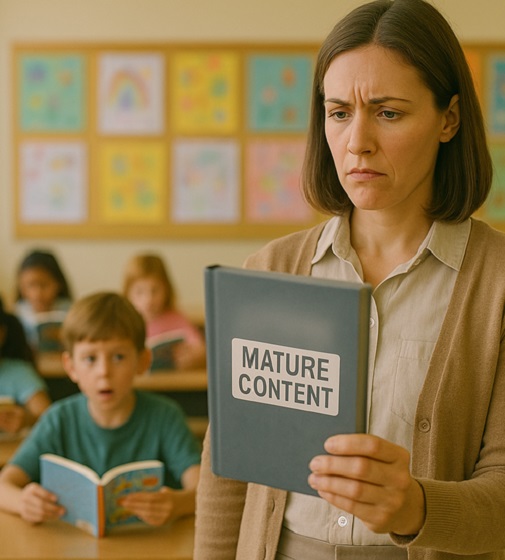Business
Planet Fitness says ‘discomfort’ not a reason to ban ‘transgender’ men from women’s locker rooms

From LifeSiteNews
The company’s stock plummeted after it terminated a member who exposed a man shaving in a woman’s locker room in front of a girl estimated to be around 12 years old.
Popular exercise chain Planet Fitness is doubling down on its prioritization of “gender identity” over female customers’ welfare, putting in writing that “discomfort” over sharing intimate facilities with the opposite sex should not be accommodated.
Planet Fitness, which for years has allowed gender-confused men in women’s locker rooms, came back in the news this month when an Alaskan Planet Fitness member named Patricia Silva shared online a video she took of a man who “identifies” as a woman shaving in a women’s locker room. She said that at the time of the incident, a girl estimated to be 12 years old was sitting in a corner, wrapped in a towel, and “freaked out” by having an adult male in her changing area.
In accordance with the company’s woke priorities, however, instead of removing the man, Planet Fitness revoked Silva’s membership, citing her violation of a policy against photographing other gym members.
“So, I would like for you women to stand up and have a voice and stop these shenanigans,” Silva said. “You have authority! Use your authority.”
Since the story broke, Planet Fitness’s stock price has dropped from $66.92 on March 7 to $56.46 on March 19. “The chain saw a $400 million dive in valuation from $5.3 billion to $4.9 billion,” Fox Business reported Thursday.
But the company is digging in its heels.
Chief corporate affairs officer McCall Gosselin told the Christian Post that the policy is part of the company’s vision of an “inclusive environment,” and that its “gender identity non-discrimination policy states that members and guests may use the gym facilities that best align with their sincere, self-reported gender identity.” The company also said that members claiming trans status may only be asked to leave “if it is confirmed that a member is acting in bad faith” and is not sincerely gender confused.
Libs of TikTok also shared a page from Planet Fitness’s operations manual, which states that “Some members may feel uncomfortable with a transgender member using the same locker room facilities, bathrooms, showers, or other facilities/programs separated by sex,” but “this discomfort is not a reason to deny access to the transgender members.” It calls on staff to resolve such situations by attempting to “foster a climate of understanding,” i.e., transgender accommodation.
The company “reserves the right to terminate a person’s membership immediately for any violation of this policy,” which also requires staff (but not explicitly members) to honor preferred names and gender pronouns.
WOW. Planet Fitness is standing by their decision to allow men in women's locker rooms.
Their policies actually allow males in female spaces. They instruct women to just deal with their discomfort and make sure not to misgender the trans person in their locker room.… https://t.co/1fA52PY21Q pic.twitter.com/wl5ZCxMtVs
— Libs of TikTok (@libsoftiktok) March 15, 2024
Conservatives have long argued that forcing girls to share intimate facilities such as bathrooms, showers, or changing areas with members of the opposite sex violates their privacy rights, subjects them to needless emotional stress, and gives potential male predators a viable pretext to enter female bathrooms or lockers by simply claiming transgender status. (Planet Fitness ostensibly accounts for the last danger by reserving the right to eject men who are only faking gender confusion, but in practice such a policy is unlikely to be enforced for fear of being branded “intolerant” and the difficulty of proving what may be going on in someone’s mind.)
The harm has been highlighted by University of Pennsylvania swimmer William “Lia” Thomas, who reportedly retains male genitalia and is still attracted to women yet “identifies” as female and lesbian, causing his female teammates unrest due to sharing lockers with them; and by Loudoun County Public Schools in Virginia, where a female student was raped by a “transgender” classmate in a girls bathroom.
Business
Trump confirms 35% tariff on Canada, warns more could come

Quick Hit:
President Trump on Thursday confirmed a sweeping new 35% tariff on Canadian imports starting August 1, citing Canada’s failure to curb fentanyl trafficking and retaliatory trade actions.
Key Details:
- In a letter to Canadian Prime Minister Mark Carney, Trump said the new 35% levy is in response to Canada’s “financial retaliation” and its inability to stop fentanyl from reaching the U.S.
- Trump emphasized that Canadian businesses that relocate manufacturing to the U.S. will be exempt and promised expedited approvals for such moves.
- The administration has already notified 23 countries of impending tariffs following the expiration of a 90-day negotiation window under Trump’s “Liberation Day” trade policy.
Diving Deeper:
President Trump escalated his tariff strategy on Thursday, formally announcing a 35% duty on all Canadian imports effective August 1. The move follows what Trump described as a breakdown in trade cooperation and a failure by Canada to address its role in the U.S. fentanyl crisis.
“It is a Great Honor for me to send you this letter in that it demonstrates the strength and commitment of our Trading Relationship,” Trump wrote to Prime Minister Mark Carney. He added that the tariff response comes after Canada “financially retaliated” against the U.S. rather than working to resolve the flow of fentanyl across the northern border.
Trump’s letter made clear the tariff will apply broadly, separate from any existing sector-specific levies, and included a warning that “goods transshipped to evade this higher Tariff will be subject to that higher Tariff.” The president also hinted that further retaliation from Canada could push rates even higher.
However, Trump left the door open for possible revisions. “If Canada works with me to stop the flow of Fentanyl, we will, perhaps, consider an adjustment to this letter,” he said, adding that tariffs “may be modified, upward or downward, depending on our relationship.”
Canadian companies that move operations to the U.S. would be exempt, Trump said, noting his administration “will do everything possible to get approvals quickly, professionally, and routinely — In other words, in a matter of weeks.”
The U.S. traded over $762 billion in goods with Canada in 2024, with a trade deficit of $63.3 billion, a figure Trump called a “major threat” to both the economy and national security.
Speaking with NBC News on Thursday, Trump suggested even broader tariff hikes are coming, floating the idea of a 15% or 20% blanket rate on all imports. “We’re just going to say all of the remaining countries are going to pay,” he told Meet the Press moderator Kristen Welker, adding that “the tariffs have been very well-received” and noting that the stock market had hit new highs that day.
The Canadian announcement is part of a broader global tariff rollout. In recent days, Trump has notified at least 23 countries of new levies and revealed a separate 50% tariff on copper imports.
“Not everybody has to get a letter,” Trump said when asked if other leaders would be formally notified. “You know that. We’re just setting our tariffs.”
Business
Trump slaps Brazil with tariffs over social media censorship

From LifeSiteNews
By Dan Frieth
In his letter dated July 9, 2025, addressed to President Luiz Inácio Lula da Silva, Trump ties new U.S. trade measures directly to Brazilian censorship.
U.S. President Donald Trump has launched a fierce rebuke of Brazil’s moves to silence American-run social media platforms, particularly Rumble and X.
In his letter dated July 9, 2025, addressed to President Luiz Inácio Lula da Silva, Trump ties new U.S. trade measures directly to Brazilian censorship.
He calls attention to “SECRET and UNLAWFUL Censorship Orders to U.S. Social Media platforms,” pointing out that Brazil’s Supreme Court has been “threatening them with Millions of Dollars in Fines and Eviction from the Brazilian Social Media market.”


Trump warns that these actions are “due in part to Brazil’s insidious attacks on Free Elections, and the fundamental Free Speech Rights of Americans,” and states: “starting on August 1, 2025, we will charge Brazil a Tariff of 50% on any and all Brazilian products sent into the United States, separate from all Sectoral Tariffs.” He also adds that “Goods transshipped to evade this 50% Tariff will be subject to that higher Tariff.”
Brazil’s crackdown has targeted Rumble after it refused to comply with orders to block the account of Allan dos Santos, a Brazilian streamer living in the United States.
On February 21, 2025, Justice Alexandre de Moraes ordered Rumble’s suspension for non‑compliance, saying it failed “to comply with court orders.”
Earlier, from August to October 2024, Moraes had similarly ordered a nationwide block on X.
The court directed ISPs to suspend access and imposed fines after the platform refused to designate a legal representative and remove certain accounts.
Elon Musk responded: “Free speech is the bedrock of democracy and an unelected pseudo‑judge in Brazil is destroying it for political purposes.”
By linking censorship actions, particularly those targeting Rumble and X, to U.S. trade policy, Trump’s letter asserts that Brazil’s judiciary has moved into the arena of foreign policy and economic consequences.
The tariffs, he makes clear, are meant, at least in part, as a response to Brazil’s suppression of American free speech.
Trump’s decision to impose tariffs on Brazil for censoring American platforms may also serve as a clear signal to the European Union, which is advancing similar regulatory efforts under the guise of “disinformation” and “online safety.”
With the EU’s Digital Services Act and proposed “hate speech” legislation expanding government authority over content moderation, American companies face mounting pressure to comply with vague and sweeping takedown demands.
By framing censorship as a violation of U.S. free speech rights and linking it to trade consequences, Trump is effectively warning that any foreign attempt to suppress American voices or platforms could trigger similar economic retaliation.
Reprinted with permission from Reclaim The Net.
-

 International2 days ago
International2 days agoSecret Service suspends six agents nearly a year after Trump assassination attempt
-

 Bruce Dowbiggin1 day ago
Bruce Dowbiggin1 day agoThe Covid 19 Disaster: When Do We Get The Apologies?
-

 Crime21 hours ago
Crime21 hours agoSweeping Boston Indictment Points to Vast Chinese Narco-Smuggling and Illegal Alien Labor Plot via Mexican Border
-

 Alberta1 day ago
Alberta1 day agoAlberta school boards required to meet new standards for school library materials with regard to sexual content
-

 Business2 days ago
Business2 days agoWEF-linked Linda Yaccarino to step down as CEO of X
-

 Automotive2 days ago
Automotive2 days agoAmerica’s EV Industry Must Now Compete On A Level Playing Field
-

 Environment22 hours ago
Environment22 hours agoEPA releases report on chemtrails, climate manipulation
-

 Business2 days ago
Business2 days ago‘Experts’ Warned Free Markets Would Ruin Argentina — Looks Like They Were Dead Wrong



